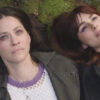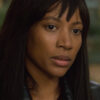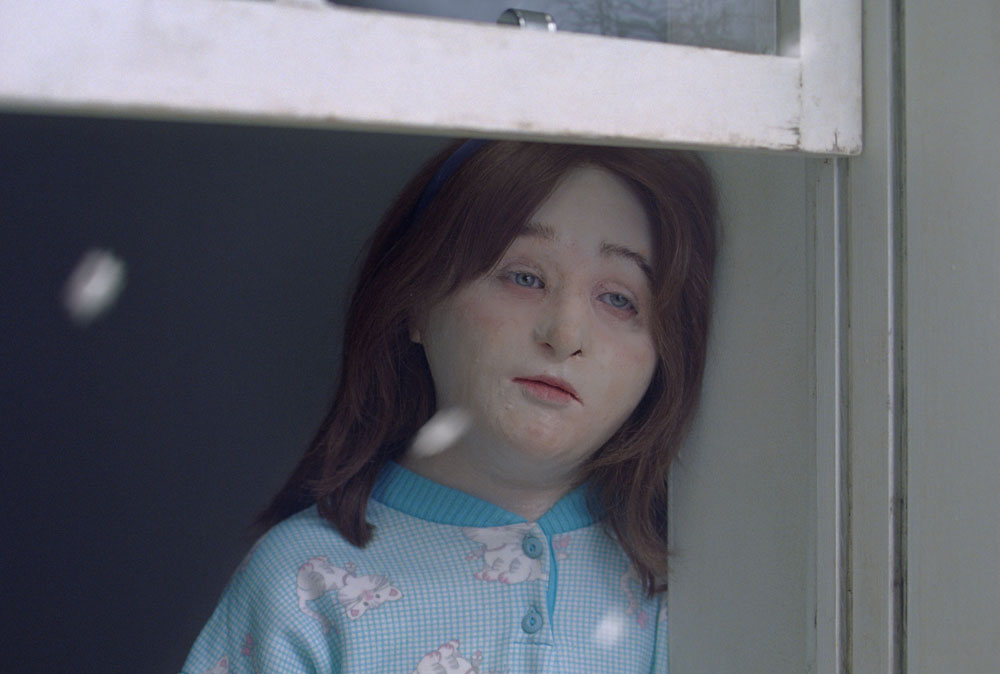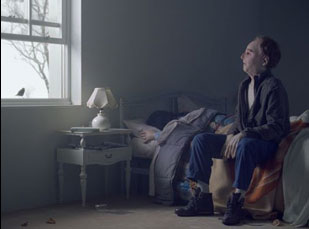As a visual artist, Diego Marcon has always been conscious of the fact that his work lives in two worlds, both formally and often physically when it can be presented in both galleries as installations and in theaters as films, so it was only natural for him to seize on stillness in his latest short “The Parents’ Room” to invite audiences to reflect on the medium that they’re watching it in.
“I like it so much about art that every element of the space becomes an element of the piece – the dimension, the audio echoes, the light, even the cable and the technology [being used to make it], even if you see it and if it’s behind the screen or if it’s on the wall or on some tripods — everything is really an element to draw a display and a narration for the viewer,” says Marcon, on the eve of “The Parents’ Room” premiere at the Cannes Film Festival. “It’s an experimental film though it’s very classical and the cinema is the cinema, but it’s cool in this way that I’m working with moving images, so there is art in there, there is cinema and [my feeling was] let’s make both.”
Notions of duality extend to the story of “The Parents’ Room,” which is likely to stick with anyone who sees it on the Croisette as it paints a disturbing family portrait, set on an overcast morning as it initially appears that a father has awakened before everyone else, preparing for the day ahead. However, the film quite literally changes his tune as he begins to burst out singing with a blackbird by the window sill as his only witness, plaintively recounting how he killed his wife and children in his sleep with plans to take his own life momentarily. Marcon lays on one unnerving contradiction after another in a relatively short amount of time, contrasting the level of passion in the father’s voice with the calm of the room he’s in after his dirty deeds are done and taking things one step further by having real actors appear under slightly exaggerated prosthetics, contemplating how a human could commit such inhumane crimes.
The result is both chilling and memorable, with Marcon acknowledging as much when he leaves a moment after the father stops singing to sit with him in virtual silence for a moment to let what he’s done fully set in. It also takes a beat to fully take in the totality of what Marcon has accomplished with a story that may seem simple on the surface but was the product of a year’s worth of work involving highly detailed masks and set design to recreate the feeling of stop-motion animation and recording with the boys’ choir at the Trinity School of Music in London to give “The Parents’ Room” its robust and soulful undercurrent. As it premieres as part of the Directors’ Fortnight at Cannes, Marcon spoke about how he is guided by his formal interests in picking the stories he wants to tell, how he went about finding the film’s unusual rhythm and creating works that are adaptable to different spaces.
I’m a visual artist, and I work with animation, both like CGI animation or even more experimental techniques like cameraless animation or traditional 2D cel animation and I remember that back in January 2019, I wanted to do a stop-motion animation, but I tried to minimize the scattering movement that stop-motion has because you have one puppet after the other. I never liked it much, so I just thought that if I can use human scale set and dress some human beings as puppets, this problem was basically solved, and as often happens to me, it’s not like I [set out] to tell a story. Everything is a process — every layer of the work on all the sides, both the dramaturgical, formal, visual melts and is shaped together somehow.
It’s surprising to hear that you once considered doing this completely animated since a fascinating source of tension is that the film is having these people who don’t look to be entirely human – or inhuman – talking about an act you’d hope humans wouldn’t be capable of, but of course, are.
Yeah, all this gives a certain uncanny vibe to the film. The first ideas often to me not really from a theoretical concept, but from a need or a simple desire. For example, [besides] the stop-motion, I don’t feel at this moment of my career the need to compare myself with the actors or with performance, so having a full covering mask that neutralized the possibility of any facial expression was just perfect to me since I don’t want to do this kind of dialogue with actors. But we wanted the hyperrealistic masks so the viewer can’t really say if those people are really puppets well-animated or really weird human beings. We can imagine that. But it’s strange because, for example, when I cast Huey Lockwood, the boy who plays the son, he was just perfect, so I asked Lorenzo [Cianchi], [the prosthetic designer] to do the mask that is basically the same face of the actor because it was perfect already. It was very experimental in this way for us. I think we can dig into a lot of speculation about this fact that they wear masks, but the masks are not necessary because there is no makeup and I like that many of the most important aspects come from something simple desire — like that I didn’t want to do stop-motion or have a dialogue with the actors — because I really think form and content are the same thing.
Was the music in mind from the start?
The idea of the musical, and what the father sings, [emerged from the fact] that sound has been very important for my pieces. The first time I used a musical composition as a structuring element of the film was for my previous film “Ludwig” where I used an aria, a particular composition of the 19th century, of the romantic period, just piano and the voice of a kid and it was conceived as a perfect loop. The piece was just this minute, perfectly looping forever, and it was also the first time using spoken word in the work, so I felt like I wanted to work more with the music — it’s simply one of the most powerful audio/visual tools to generate empathy with the spectator to shape a very strong sentimental atmosphere and I’m always interested in the work having this very strong sentimental dimension. The dialogue between the work and the spectator is firstly on a sentimental level and that the work builds a kind of sentimental, psychological display that flirts with the secular forms of entertainment, such as horror or slapstick comedy or musical.
I worked with Federico Chiari, a sound designer and a composer who has been a friend of mine basically since high school, for the first work “Ludwig,” and it was a precise thing I asked him [for musically] and this time, the music was shaped more in a dialogue, [where] we worked around this idea of a very pop/jazz/Sinatra kind of song. With Federico, everything is shaped in the dialogue, but of course, he knew the voices we need [for] the four characters, so the main voice, the female voice and the two children.
It must’ve given you chills to listen to this being recorded with the boys’ choir.
Yeah, and of course, I was referring to the main theme [of the film] in answering you, but when we recorded voices at the Trinity School of Music, basically the best boys choir of London, they were super nice and when I went there to cast the voice, the director of the choir wanted to show me two of his boys and I was so amazed that on my train back to London, I texted Federico and said, “They are amazing. We can’t just work with these guys for these too short moments in the film,” we need to record something else. He had this [other] theme in his head already, so “Blackie’s Song” [the song that plays over the end credits] was really a last moment composition because it was just after I met the choir that was so amazing. I remember we record [with the choir] just once and we were so impressed that Federico exited the room after the singing and said, “This is fine, we don’t need any other recording.” [laughs]
There’s this built-in period of reflection after the song concludes – how did you figure out the structure?
The film, like my other works is designed to be a loop [because] this is how I’m going to install it in museums or artist spaces, without the opening or end credits and without “Blackie’s Song” — after three minutes, the blackbird comes again and everything keeps on [going] forever. But deciding to make a theatrical version of it is a very important decision and I felt from the beginning, a lot happens in three minutes — you have [these actors in] prosthetics and this kind of cartoonish character of the blackbirds and the [heavy] lyrics of the song, which is pretty strong and weird and then the film is left there for the spectator to just think about everything you saw and heard, so it was nice to leave this at the end [rather than at] the beginning, to just enter as a rush to the spectator, make a little bit of mess and then go away. The function of this long silence is to let the viewer think. I’d be curious to know what you thought about it…
I loved that it’s an emotionally intense film and then you have this breath, but you can also hear the echo of the blackbird.
Yeah, of course, it is also a pretty comical rhythm, even if I think it’s not in a common way, but to have all this story with these weird faces and characters and then to have this long silence with a woodpecker, I find it pretty funny. For me, the most funny thing is to try to find this balance between disturbing and pretty dark and intense, but at the same time with irony everywhere.
What’s it like going to Cannes?
It’s very funny, especially from my side because I’m not a film director, I’m a visual artist and I want to keep on doing exhibitions and at least in the moment, I’m not thinking of [making] any feature films. I also did some pieces which are not for cinema at all and I like to think about my work in general as a kind of meeting point between the two different attitudes towards cinema, — on one side analytical, cold approach to filmmaking like this kind of experimental filmmaking and on the other, an attitude of entertainment, like horror or musical or comedy, really mainstream movies — and there’s the possibility that the film can have these two lives. What I did [with] my previous film, speaking of the same film, seeing it in the movie theater in a theatrical version and seeing it as an installation, it was like speaking to two audiences that saw two different works, so being in Cannes, which is like the church of the cinema is very funny and super-exciting and an honor. I really don’t know what to expect.
“The Parents’ Room” will screen at Cannes as part of the Directors’ Fortnight on July 15th at 2:45 pm at the Theatre Croisette and July 16th at noon at the Olympia 8 and 3 pm at Studio 13.





